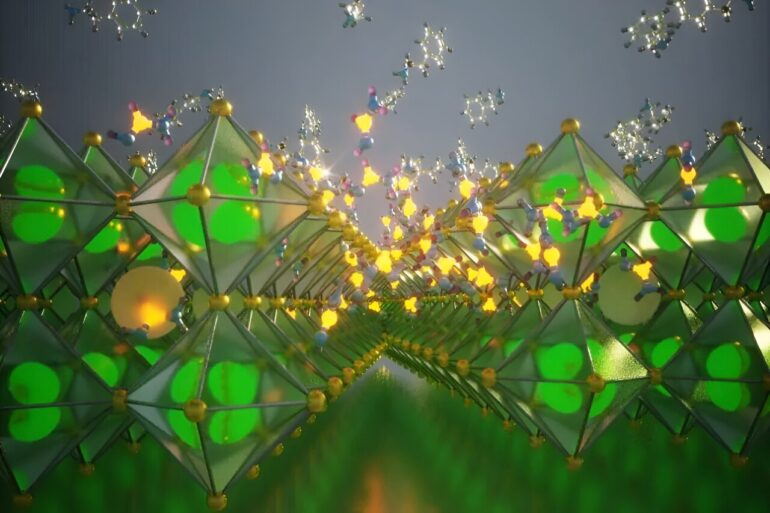Georgia Tech materials engineers have unraveled the mechanism that causes degradation of a promising new material for solar cells—and they’ve been able to stop it using a thin layer of molecules that repels water.
Their findings are the first step in solving one of the key limitations of metal halide perovskites, which are already as efficient as the best silicon-based solar cells at capturing light and converting it into electricity. They reported their work in the Journal of the American Chemical Society.
“Perovskites have the potential of not only transforming how we produce solar energy, but also how we make semiconductors for other types of applications like LEDs or phototransistors. We can think about them for applications in quantum information technology, such as light emission for quantum communication,” said Juan-Pablo Correa-Baena, assistant professor in the School of Materials Science and Engineering and the study’s senior author. “These materials have impressive properties that are very promising.”
Perovskite development has been happening quickly, particularly after engineers and chemists recognized their potential for more efficient solar cells a decade ago. The problem with metal halide perovskites is that they are unstable when they interact with water and oxygen, transforming into a different structure that doesn’t work well to create solar power.
The Georgia Tech team uncovered why, using X-ray scattering and spectroscopy to study the chemical interactions between perovskites and the environment. The researchers found the complex interplay of both water and oxygen with the perovskites leads to instability; taking away one of those preserved the perovskites’ energy-capturing crystal structure.
“Before this paper, people thought if you expose them to just water, these materials degrade. If you expose them to just oxygen, these materials degrade. We’ve decoupled one from the other,” said Correa-Baena, who’s also a Goizueta Early Career Faculty Chair. “If you prevent one or the other from interacting with the perovskites, you mostly prevent the degradation.”
Correa-Baena’s team, which included collaborators at Brookhaven and Argonne national labs and in Italy and Germany, tested their discovery by adding a thin coating of a material called phenethylammonium iodide (PEAI) on a perovskite film. PEAI molecules repel water, and the researchers found that was enough to stabilize the perovskites’ structure and thus their power conversion efficiency.
PEAI does have drawbacks, however. “These molecules are very good at preventing water from interacting with the perovskite, but they’re also very bad at thermal stability,” Correa-Baena said.
Once sunlight hits the perovskite cells and they heat up, the PEAI molecules start moving and efficiency drops. So now the team is working on the thermal stability problem.
For that, Correa-Baena is turning to Georgia Tech chemist and materials scientist Antonio Facchetti to develop new molecules that can prevent water interactions and remain stable at high temperatures.
It will be the next chapter in a story Correa-Baena said Tech is writing to help make Georgia a leader in emerging solar energy technology.
“Industry is already very interested, with companies around the U.S. popping up and trying to commercialize this. All the technology that we’re creating here at Georgia Tech is eventually going to be able to be translated into industry,” he said. “We want to create an ecosystem where Georgia becomes big in solar manufacturing activities, and hopefully that will include perovskites.”
More information:
Juanita Hidalgo et al, Synergistic Role of Water and Oxygen Leads to Degradation in Formamidinium-Based Halide Perovskites, Journal of the American Chemical Society (2023). DOI: 10.1021/jacs.3c05657
Provided by
Georgia Institute of Technology
Citation:
Researchers find they can stop degradation of promising solar cell materials (2023, December 20)



